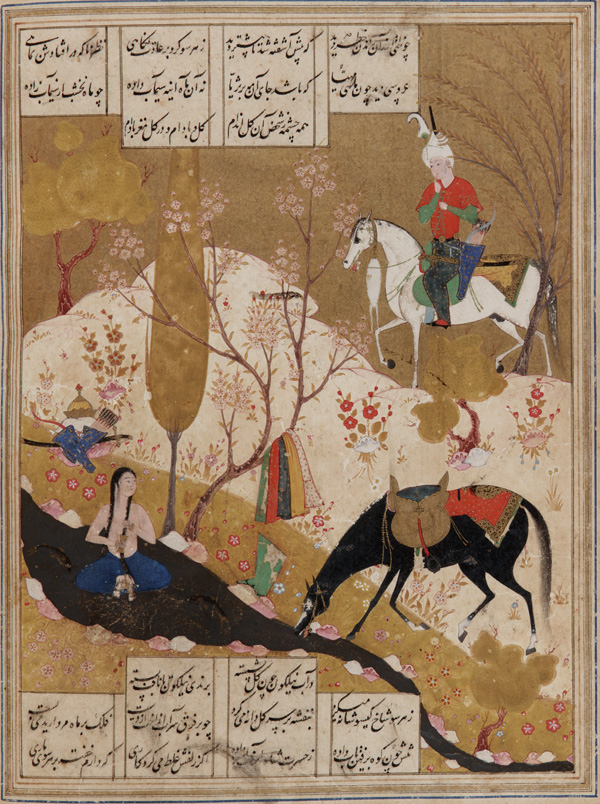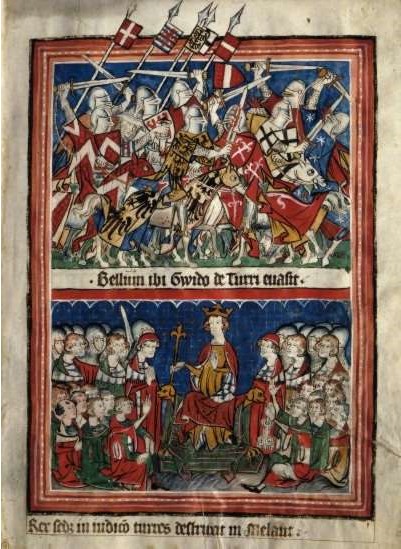|
Muhammad Ibn Muhammad Al-Arif Ardabili
Muhammad ibn Muhammad al-Arif Ardabili () was a 14th-century poet who is principally known for composing the Persian poem ''Farhadnama'' between 1369 and 1372. Life Not much information survives about him. He was born in city of Ardabil, in 1311. He was brought to the court of Shirvanshah Kavus and became a court poet. He completed his ''magnum opus'' ''Farhadnama'' between 1369 and 1372 (in Persian language). He was strongly influenced by Nizami Ganjavi. He was tutor of the Shirvanshah Hushang Hushang (; ), also spelled Hōshang, is an early hero-king in Iranian mythology. He is known from Avestan, Middle Persian, and Sasanian-based Persian and Arabic sources. He appears to have been one of several 'first man/king' figures in different ... (). References Sources * {{DEFAULTSORT:Ardabili, Arif 14th-century Persian-language poets 1311 births Poets of the Shirvanshahs ... [...More Info...] [...Related Items...] OR: [Wikipedia] [Google] [Baidu] |
Shirvanshah
The Shirvanshahs (Arabic/) were the rulers of Shirvan (in present-day Azerbaijan) from 861 to 1538. The first ruling line were the Yazidids, an originally Arab and later Persianized dynasty, who became known as the Kasranids (also referred to as the Khaqanids). The second ruling line were the Darbandi, distant relatives of the Yazidids/Kasranids. The Shirvanshahs ruled from 861 to 1538, one of the most enduring dynasties of the Islamic world. At times they were independent, often they had to recognize the overlordship of neighbouring empires. The dynasty is known for its patronage of culture, such as during the 12th-century, when their realm served as the focal point for Persian literature, attracting distinguished poets such as Khaqani, Nizami Ganjavi, Falaki Shirvani, etc. In 1382, the Shirvanshah throne was taken by Ibrahim I (), thus marking the start of the Darbandi line. The Shirvanshah realm flourished in the 15th century, during the long reigns of Khalilullah I ... [...More Info...] [...Related Items...] OR: [Wikipedia] [Google] [Baidu] |
Hushang Of Shirvan
Hushang () was the Shirvanshah from 1372/73 to 1382. Life He was the son and successor of Kavus, under whom the Shirvanshah kingdom came under the rule of the Jalayirid Sultanate (1335–1432). Hushang himself was brought up in court of Shaykh Uways as a hostage and was released as soon as his father died. He didn't resist and possibly preferred guerilla warfare against Shah Mansur who was tasked with conquering Shirvan as a part of Shah Shoja Mozaffari's invasion of Azerbaijan in 1375. He continued to mint coins with legends mentioning Jalayirid overlords like Shaikh Hussain Jalayir and Ahmad Jalayir throughout his reign. According to Munejjimbashi, he reconciled brothers who escaped to Arran in fear of the powerful 'Adil Aqa, the governor of Ray. Hushang was killed by his subjects in 1382, thus marking the end of the Kasranid branch of the dynasty. He was succeeded by Ibrahim I (), his cousin. This marked the start of the Darbandi line. Legacy The poet Muhammad ibn ... [...More Info...] [...Related Items...] OR: [Wikipedia] [Google] [Baidu] |
Topkapı Palace
The Topkapı Palace (; ), or the Seraglio, is a large museum and library in the east of the Fatih List of districts of Istanbul, district of Istanbul in Turkey. From the 1460s to the completion of Dolmabahçe Palace in 1856, it served as the administrative center of the Ottoman Empire, and was the main residence of its sultans. Construction, ordered by the Sultan Mehmed the Conqueror, began in 1459, six years after the Fall of Constantinople, conquest of Constantinople. Topkapı was originally called the "New Palace" ( or ) to distinguish it from the Eski Saray, Old Palace ( or ) in Beyazıt Square. It was given the name , meaning Cannon Gate, in the 19th century. The complex expanded over the centuries, with major renovations after the 1509 Constantinople earthquake, 1509 earthquake and the 1665 fire. The palace complex consists of four main courtyards and many smaller buildings. Female members of the Sultan's family lived in the harem, and leading state officials, including th ... [...More Info...] [...Related Items...] OR: [Wikipedia] [Google] [Baidu] |
Istanbul
Istanbul is the List of largest cities and towns in Turkey, largest city in Turkey, constituting the country's economic, cultural, and historical heart. With Demographics of Istanbul, a population over , it is home to 18% of the Demographics of Turkey, population of Turkey. Istanbul is among the List of European cities by population within city limits, largest cities in Europe and List of cities proper by population, in the world by population. It is a city on two continents; about two-thirds of its population live in Europe and the rest in Asia. Istanbul straddles the Bosphorus—one of the world's busiest waterways—in northwestern Turkey, between the Sea of Marmara and the Black Sea. Its area of is coterminous with Istanbul Province. Istanbul's climate is Mediterranean climate, Mediterranean. The city now known as Istanbul developed to become one of the most significant cities in history. Byzantium was founded on the Sarayburnu promontory by Greek colonisation, Greek col ... [...More Info...] [...Related Items...] OR: [Wikipedia] [Google] [Baidu] |
Ardabil
Ardabil (, ) is a city in northwestern Iran. It is in the Central District (Ardabil County), Central District of Ardabil County, Ardabil province, Ardabil province, Iran, serving as capital of the province, the county, and the district. The city of Ardabil lies close to the borders of the Azerbaijan, Republic of Azerbaijan, 40 kilometers from the village of Diqo. As of the 2022 census, Ardabil's population was 588,000. The population of Ardabil County is about 650,000 with the majority Shia, Shia Muslim. For a brief period in the 10th century, Ardabil was the principal city of Azerbaijan (Iran), Azerbaijan, but it was eventually replaced by Tabriz. Iran under the Safavids, by Roger Savory /Page 1/ (New York, 1980), in 286 bookmarked and searchable pdf pages, with map and illustrations. Scanned by Robert Bedrosian. Ardabil is known for its trade in silk and carpets. Ardabil rugs are renowned and the ancient Ardabil Carpet, Ardabil carpets are considered among the best of c ... [...More Info...] [...Related Items...] OR: [Wikipedia] [Google] [Baidu] |
Shirvanshah Kavus
Kavus () or Kawus or sometimes Keykavus II was the 32nd ruler of Shirvan. He was a son of Kayqubad and older brother of Sultan Muhammad. Co-reign According to Abd al-Razzaq Samarqandi, he was styled as "''Lord of Shamakhi and Shirvan''" in youth. Abdulkarim Alizadeh argued that probably he was already ruling in name of his father in 1348, due to Kayqubad's advanced age. He sought to gain strong alliance with Chupanid Malek Ashraf, as he travelled to his court and submitted to him. However, Malek Ashraf then unexpectedly killed a nobleman named amir Haji Shahriman and his son in Karabakh. Kavus was horrified and immediately returned to Shirvan. Soon, Malek Ashraf sent his envoys Khwaja Abdulhay and Akhijuq Malik to Shirvan and to express his desire to marry a daughter of Kayqubad. Kavus denied the demand, and frustrated because of denial, Malek marched on Shirvan but was repelled and forced to make peace. He attacked Shirvan once again in the winter of 1347, but Kavus and his f ... [...More Info...] [...Related Items...] OR: [Wikipedia] [Google] [Baidu] |
Persian Language
Persian ( ), also known by its endonym and exonym, endonym Farsi (, Fārsī ), is a Western Iranian languages, Western Iranian language belonging to the Iranian languages, Iranian branch of the Indo-Iranian languages, Indo-Iranian subdivision of the Indo-European languages. Persian is a pluricentric language predominantly spoken and used officially within Iran, Afghanistan, and Tajikistan in three mutual intelligibility, mutually intelligible standard language, standard varieties, respectively Iranian Persian (officially known as ''Persian''), Dari, Dari Persian (officially known as ''Dari'' since 1964), and Tajik language, Tajiki Persian (officially known as ''Tajik'' since 1999).Siddikzoda, S. "Tajik Language: Farsi or not Farsi?" in ''Media Insight Central Asia #27'', August 2002. It is also spoken natively in the Tajik variety by a significant population within Uzbekistan, as well as within other regions with a Persianate society, Persianate history in the cultural sphere o ... [...More Info...] [...Related Items...] OR: [Wikipedia] [Google] [Baidu] |
Nizami Ganjavi
Nizami Ganjavi (; c. 1141 – 1209), Nizami Ganje'i, Nizami, or Nezāmi, whose formal name was Jamal ad-Dīn Abū Muḥammad Ilyās ibn-Yūsuf ibn-Zakkī,Mo'in, Muhammad(2006), "Tahlil-i Haft Paykar-i Nezami", Tehran.: p. 2: Some commentators have mentioned his name as “Ilyas the son of Yusuf the son of Zakki the son of Mua’yyad” while others have mentioned that Mu’ayyad is a title for Zakki. Mohammad Moin, rejects the first interpretation claiming that if it were to mean 'Zakki son of Muayyad' it should have been read as 'Zakki i Muayyad' where izafe (-i-) shows the son-parent relationship but here it is 'Zakki Muayyad' and Zakki ends in silence/stop and there is no izafe (-i-). Some may argue that izafe is dropped due to meter constraints but dropping parenthood izafe is very strange and rare. So it is possible that Muayyad was a sobriquet for Zaki or part of his name (like Muayyad al-Din Zaki). This is supported by the fact that later biographers also state Yusuf was ... [...More Info...] [...Related Items...] OR: [Wikipedia] [Google] [Baidu] |
14th-century Persian-language Poets
The 14th century lasted from 1 January 1301 (represented by the Roman numerals MCCCI) to 31 December 1400 (MCD). It is estimated that the century witnessed the death of more than 45 million lives from political and natural disasters in both Europe and the Mongol Empire. West Africa experienced economic growth and prosperity. In Europe, the Black Death claimed 25 million lives wiping out one third of the European population while the Kingdom of England and the Kingdom of France fought in the protracted Hundred Years' War after the death of King Charles IV of France led to a claim to the French throne by King Edward III of England. This period is considered the height of chivalry and marks the beginning of strong separate identities for both England and France as well as the foundation of the Italian Renaissance and the Ottoman Empire. In Asia, Tamerlane (Timur), established the Timurid Empire, history's third largest empire to have been ever established by a single conqueror. S ... [...More Info...] [...Related Items...] OR: [Wikipedia] [Google] [Baidu] |
1311 Births
Year 1311 ( MCCCXI) was a common year starting on Friday of the Julian calendar. Events January – March * January 6 – Henry VII, the future Holy Roman Emperor, is crowned King of Italy in Milan with a mock-up of the Iron crown of Lombardy. The Tuscan Guelphs refuse to attend the ceremony and begin preparing for resistance against Henry's rule. Henry approves the despotic regimes of Matteo I Visconti in Milan and Cangrande I della Scala in Verona. The cities of Piedmont and Lombardy submit to Henry – in accordance with the proclaimed program of peace and justice. Florence and their Guelph (anti-imperialist) allies in Tuscany and Romagna move to defend themselves against Henry's accession.Jones, Michael, ''The New Cambridge Medieval History, Vol. VI: c. 1300-c. 1415'', Cambridge University Press, 2000. Page 533ff * February 12 – Milan Uprising: German forces under Baldwin of Luxembourg (brother of Henry VII) crush the Italian Guelph troops, led by Guido dell ... [...More Info...] [...Related Items...] OR: [Wikipedia] [Google] [Baidu] |




